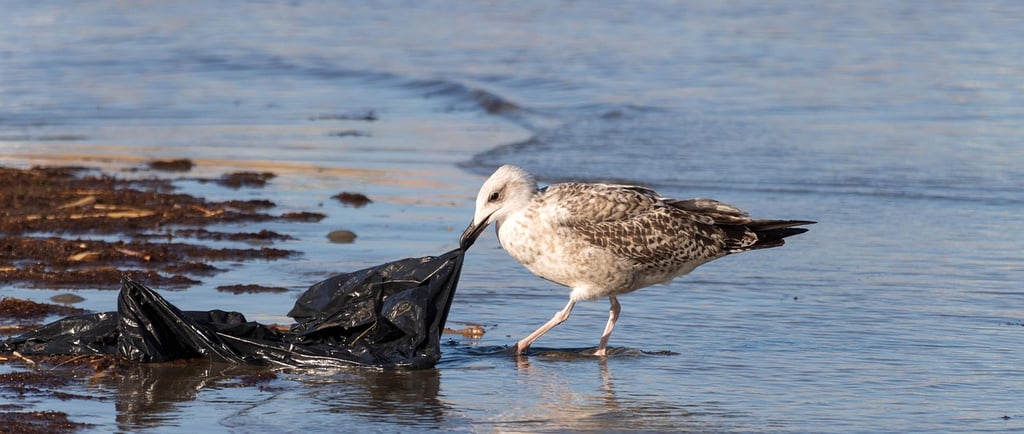How Plastic Pollution Is Silently Killing Seabirds
Plastic pollution is silently destroying seabird populations. Learn how everyday plastics are harming species like albatrosses and fulmars—and discover simple but powerful actions you can take to help stop it.
Anny
4/9/20252 min read


Plastic waste isn’t just an eyesore—it’s a deadly threat to life at sea. Among the many victims of our plastic addiction are seabirds, who often mistake floating plastic for food while foraging over the ocean. These birds live on land but rely on the sea for survival, making them especially vulnerable to marine pollution.
When seabirds ingest plastic, even just one piece can block their digestive tract, making it impossible to absorb nutrients. This leads to starvation, slow death, and the collapse of seabird populations. Alarmingly, plastic has been found in every seabird family worldwide.
Let’s take a closer look at some seabird species and how plastic affects them:
Northern Fulmars are surface feeders and often pick up small bits of plastic, mistaking them for food. A study in the Arctic showed 90% of them had plastic in their stomachs. Governments and environmental organizations now track fulmars as an indicator of ocean plastic levels.
Short-tailed Shearwaters, which migrate across the Pacific, frequently ingest rubber and plastic fragments. Research in Tasmania found plastic in nearly all chick stomachs studied.
Laysan Albatrosses, with their sweeping beak skims, often collect lighters, bottle caps, and fishing lines. They unknowingly feed these items to their young. On Midway Atoll, 97.5% of chicks had plastic inside them—a horrifying number.
Petrels, many of which are already endangered, often feed in areas like the open ocean gyres where plastic accumulates. Unlike some birds, petrels can’t regurgitate easily, meaning plastic stays inside their bodies longer, causing more damage.
This isn’t just sad—it’s a crisis. If no change occurs, studies estimate 99% of seabird species will have ingested plastic by 2050.
So What Can We Do?
Cut down on single-use plastics. Skip straws, bring your own bag, and carry a reusable water bottle. These actions reduce waste and send a message to industries: we want alternatives.
Join or organize cleanups. Whether it’s a beach, riverbank, or local park, removing plastic before it reaches the ocean helps protect wildlife. Programs like the International Coastal Cleanup offer great ways to get involved.
Support stronger policies. Push for laws that limit plastic production and require companies to take responsibility for waste. Look into organizations like Ocean Conservancy for ways to raise your voice.
Let’s not wait for seabirds to disappear before we act. The plastic crisis is ours to solve—one habit, one law, one cleanup at a time.
Sustainability
Crafting fine leather bags with a commitment to sustainability.
Contact
Join
© 2023. All rights reserved.
